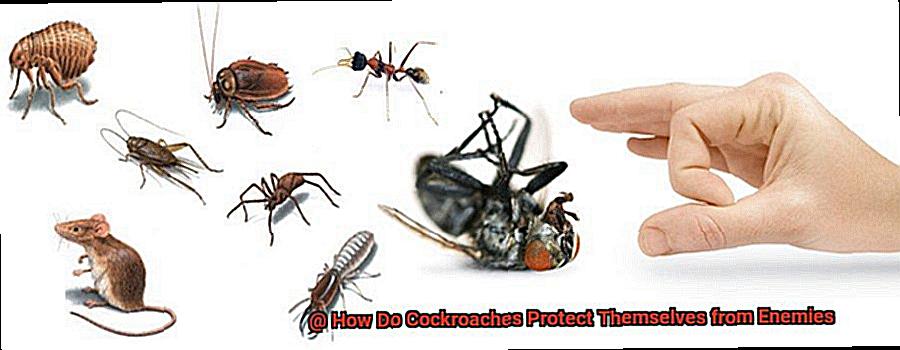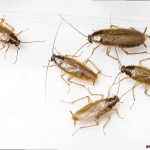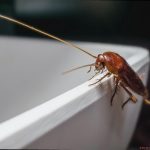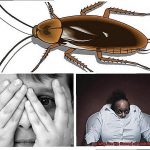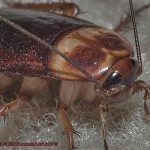Have you ever wondered how cockroaches manage to survive in the face of danger?
These resilient creatures are known for their ability to withstand extreme conditions, from radiation and chemical poisoning to natural disasters. But what about predators in their natural environment?
In this article, we’ll delve into the fascinating ways that cockroaches protect themselves from enemies. Believe it or not, these creepy crawlies have a natural defense mechanism that makes them nearly invincible.
Their tough exoskeleton, made up of chitin, acts as a suit of armor against predators such as birds, rodents, and other insects. And if a predator manages to take a bite out of them?
No problem – cockroaches can regenerate their limbs, making it difficult for predators to take them down. But wait, there’s more.
Cockroaches also have an incredible ability to hide and blend into their surroundings. They seek out dark and concealed areas like cracks and crevices, making it almost impossible for predators to locate them.
Plus, they can change colors to match their environment – talk about camouflage. So if you’re intrigued by these fascinating creatures and want to learn more about how they use their natural abilities to avoid danger and emerge as one of the most resilient species on the planet, keep reading.
We’ll explore all the surprising ways that cockroaches protect themselves from enemies.
What are Cockroaches?
Contents
Cockroaches are remarkable insects that have been roaming the planet for more than 300 million years.
They belong to the order Blattodea and are one of the most adaptable creatures in the world. With more than 4,500 known species globally, only a few of them inhabit human dwellings.
Cockroaches are easily identifiable by their flattened bodies, six legs, long antennae, and two pairs of wings. While not all species can fly, they all have a hard exoskeleton that shields them from predators and environmental hazards.
Despite their reputation for being dirty and disease-carrying, not all cockroach species pose a threat to humans. In fact, some species are used in scientific research and considered beneficial to the environment.
Nevertheless, some can cause health issues and property damage. Cockroaches are omnivorous and will eat almost anything.
They prefer starchy and sugary foods but can also survive on non-food items like glue and soap. They are nocturnal creatures that prefer dark, warm, and humid environments to hide during the day.
They can be found in various habitats such as homes, hospitals, restaurants, and sewers. Apart from their survival instincts, cockroaches have other intriguing abilities.
For instance, they can run at an impressive speed of up to three miles an hour, making them quick escape artists. They also have a unique ability to regenerate their limbs, which helps them in getting away from predators.
Another interesting fact about cockroaches is their ability to camouflage themselves by changing colors to blend in with their surroundings. They have a strong sense of smell and taste as well as the ability to detect vibrations in the air or ground, which helps them sense danger before it’s too late.
While some species may pose a threat to humans, others offer benefits to the environment and scientific research.
Nocturnal Behavior
Cockroaches are known for their preference to stay active at night, seeking shelter during the day.

But have you ever wondered why? Cockroaches have survived for millions of years, and their nocturnal behavior is one of the reasons behind their success.
During the day, they seek refuge in dark, warm places like cracks in walls, under appliances or cardboard boxes. These hiding spots provide them with protection from predators and other threats to their existence.
At night, cockroaches venture out of their hiding places in search of food and mates. They move with speed and agility, making it difficult for predators to catch them.
Cockroaches also possess a keen sense of smell that helps them detect potential dangers, allowing them to quickly retreat back to safety if necessary. One of the key reasons why cockroaches prefer darkness is because it provides cover from predators.
During the day, birds or lizards can easily spot and capture them, but at night, it’s much harder for predators to locate them. Cockroaches are incredibly adaptable creatures capable of surviving in various conditions, including extreme heat, cold, and drought.
This adaptability is another reason behind their success as a species. In conclusion, the nocturnal behavior of cockroaches is a mechanism they use to protect themselves from enemies.
During the day, they hide in safe locations where predators cannot find them. At night, they emerge to search for sustenance and companionship while remaining vigilant for potential threats.
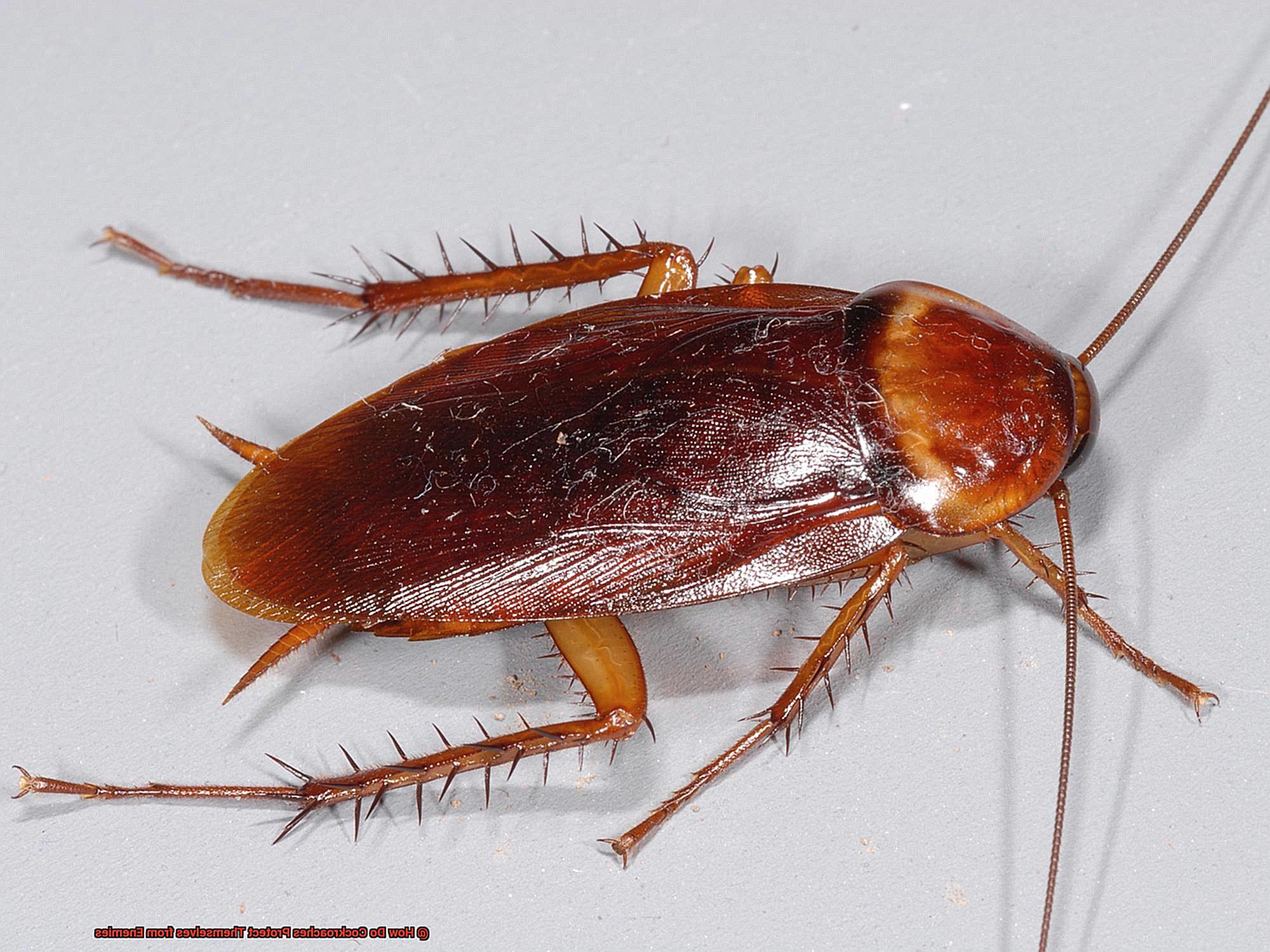
Their adaptability, hardiness, and intriguing habits make them one of the most fascinating creatures on Earth.
Quick Running Ability
One of the most awe-inspiring features of cockroaches is their quick running ability, which allows them to escape from danger and predators in the blink of an eye. In this post, we’ll delve into what makes cockroaches such speedy sprinters and how they use their agility to survive.
At the heart of their quick running ability is their low center of gravity. With their bodies close to the ground, cockroaches are able to maintain stability and balance when running at high speeds.
Their streamlined body shape also enables them to navigate through narrow spaces and climb over obstacles with ease. But that’s not all there is to it.
Cockroaches are also masters of distraction, often using their speed as a tactic to throw predators off their trail. When threatened, they’ll dart in zigzag patterns or change directions rapidly, making it almost impossible for predators to catch them.
Another remarkable feature of cockroaches is the tiny hairs on their feet that allow them to run on all kinds of surfaces without slipping or falling. This adaptation has helped them survive in a wide range of environments, from smooth kitchen floors to rough outdoor terrain.
Exoskeleton Protection
One of the most unique features that make them so impressive is their exoskeleton protection.
This hard outer layer covers their entire body, acting as a barrier between them and any potential threats in their environment. Made from chitin, a complex carbohydrate also found in the shells of crustaceans and insects, the exoskeleton is incredibly tough and strong.
This material makes it incredibly challenging for predators to penetrate, providing a solid layer of protection against them. The thickness of the exoskeleton can vary depending on the species of the cockroach, but it always offers excellent defense against physical harm.
But wait, there’s more. The exoskeleton also helps prevent dehydration by retaining water within the cockroach’s body.
This means that they can survive for long periods without access to water, making them even more resilient creatures. As if that wasn’t impressive enough, the exoskeleton also plays a role in regulating the internal temperature of the cockroach’s body.
These cold-blooded creatures rely on their environment to regulate their body temperature. But, the exoskeleton helps to insulate their bodies, preventing them from losing heat too quickly in colder temperatures.
Limb Regeneration
Cockroaches may not be everyone’s favorite creatures, but they have some truly incredible abilities that make them fascinating to study.
One such ability is their impressive process of limb regeneration, which sets them apart from most other insects. When a cockroach loses a limb, it’s not the end of the world for them.
They possess a special ability to regenerate lost limbs, and this process is truly remarkable. It all starts with the activation of blastemal cells, which are located at the base of the lost limb.
These blastemal cells are undifferentiated, which means they can divide and differentiate into different types of cells needed for limb regeneration. Over time, these cells form a structure called a blastema, which eventually develops into a fully functional limb.
This complex process involves several genes and signaling pathways that researchers are still working to fully understand. Beyond their limb regeneration abilities, cockroaches have evolved several other defensive mechanisms to protect themselves from predators.
They’re incredibly fast runners, can squeeze through small spaces with ease, and emit a foul odor when threatened. Their tough exoskeletons also provide them with excellent physical protection.
So, while we may not love having cockroaches around, there’s no denying their incredible adaptations for survival. Limb regeneration is just one example of the amazing things these resilient insects are capable of.
H_HxwLHX8mc” >
Camouflage and Color Changing Ability
These resilient insects have a secret weapon that helps them evade predators – their incredible camouflage and color-changing abilities. While their tough exoskeleton provides some protection from predators, it’s not enough to keep them safe from all threats.
That’s why cockroaches rely on their natural abilities to blend in with their surroundings. One of the ways they do this is by changing the color of their exoskeleton to match their environment.
This makes it almost impossible for predators to detect them, especially when they are hiding in tight spaces like cracks and crevices. But that’s not all – cockroaches also have a unique ability to change the color of their bodies depending on the temperature and humidity of their environment.
This adaptation makes them even more invisible, as they seamlessly blend into their surroundings. In addition to changing color, cockroaches are experts at using camouflage to protect themselves.
They can flatten their bodies and squeeze into unimaginably small spaces, making it almost impossible for predators to reach them. It’s no wonder that cockroaches are known for being masters of hiding in plain sight.
Their impressive set of defensive mechanisms helps them evade predators and survive in almost any environment.
Also Read: Do Cockroaches Play Dead? – All About Roaches
Conclusion
As we come to the end of our exploration into how cockroaches protect themselves from enemies, it’s clear that these insects are truly remarkable creatures.
Their chitin exoskeleton is like a suit of armor, shielding them from physical harm and making them tough to crack. And if a predator does manage to get a hold of them, their incredible ability to regenerate lost limbs means they can quickly bounce back.
But that’s not all – cockroaches are masters of disguise, blending into their surroundings with ease thanks to their impressive camouflage and color-changing abilities. They’re also experts at hiding in plain sight, seeking out dark and concealed areas where predators are unlikely to find them.
And let’s not forget about their lightning-fast speed – these nocturnal creatures can run up to three miles per hour, making them quick escape artists. Plus, their unique sense of smell and taste helps them detect danger before it’s too late.
Despite their unsavory reputation, there are even some species of cockroach that are beneficial to the environment and used in scientific research. It just goes to show that these creepy crawlies have been around for over 300 million years for good reason – they’re adaptable, hardy, and fascinating insects.
In conclusion, while we may shudder at the thought of encountering a cockroach in our homes or workplaces, we can’t deny their mastery of distraction and survival.

